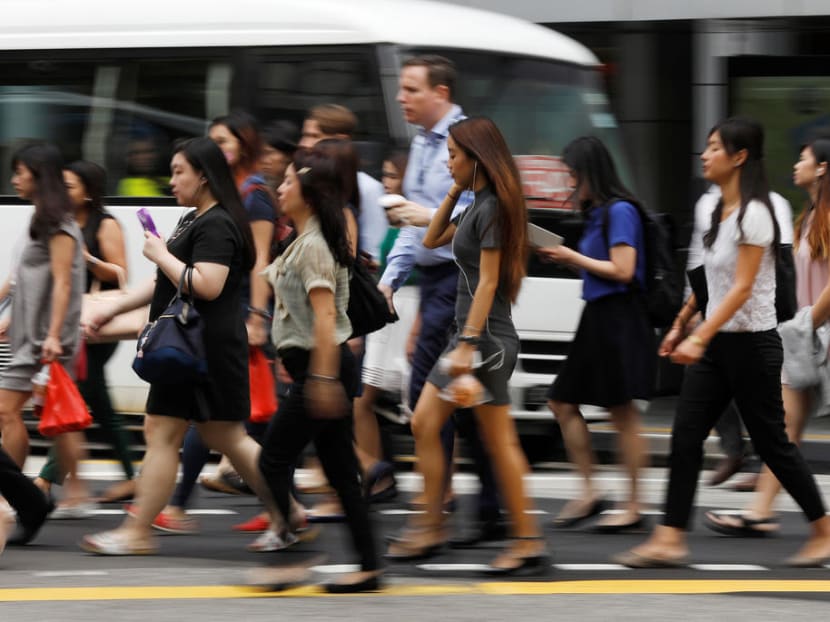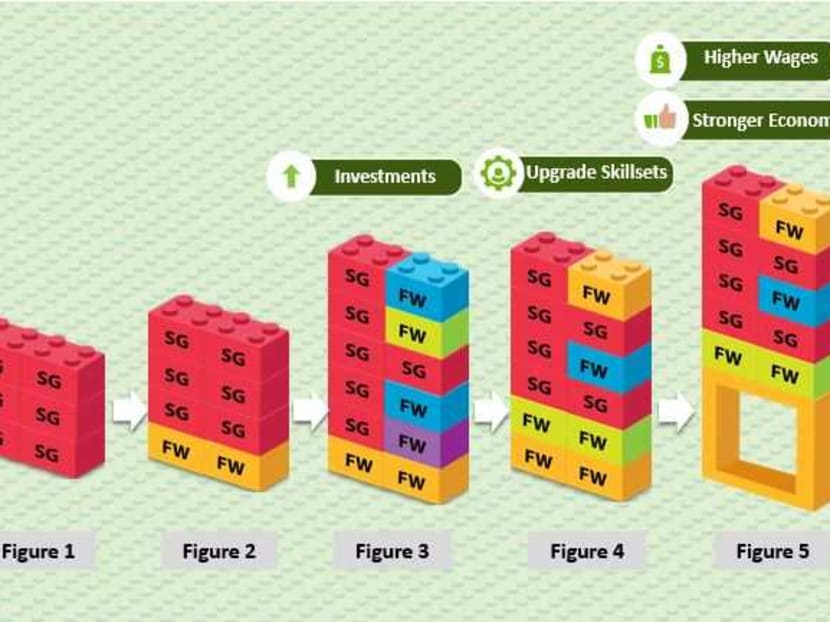Zero foreign manpower growth a ‘theoretical possibility’ with serious implications: Chan Chun Sing
SINGAPORE — Zero foreign manpower growth is a "theoretical possibility" but it would have serious implications and trade-offs for the Singapore economy, Trade and Industry Minister Chan Chun Sing said in Parliament on Tuesday (Feb 4).

Trade and Industry Minister Chan Chun Sing presented in Parliament three scenarios that could emerge if Singapore adopts a policy of zero foreign manpower growth.
SINGAPORE — Zero foreign manpower growth is a "theoretical possibility" but it would have serious implications and trade-offs for the Singapore economy, Trade and Industry Minister Chan Chun Sing said in Parliament on Tuesday (Feb 4).
These implications include having to give up new investments and forgoing the creation of higher-value jobs for Singaporeans over time, he added.
Mr Chan was responding to a parliamentary question by Mr Liang Eng Hwa, Member of Parliament (MP) for Holland-Bukit Timah Group Representation Constituency (GRC), on whether Singapore could aim for such a target.
It is an open question whether Singapore can attract the talented immigrants it needs to drive the nation’s economic growth, Mr Chan added, as Aljunied GRC MP Pritam Singh joined the debate by asking a supplementary question.
Mr Chan said: “I always jokingly say immigration is the story of unrequited love. Those that we want may not want us. Those that we don’t want may all want to come.”
In illustrating his points, Mr Chan presented three scenarios that could emerge if Singapore adopts a policy of zero foreign manpower growth.
The scenarios are based on the example of a Singaporean in a S$5,000-a-month job and the possibility of attracting a high-quality investment that could create two new jobs — one with a S$7,000 salary and another one with a S$10,000 salary.
SCENARIO ONE: NOT ALLOWING FOREIGN WORKERS TO COME
Mr Chan said that if Singapore did not allow foreign workers to enter Singapore, the only way that the country could attract the investment would be if two Singaporeans were available to take on the new jobs.
In such a scenario, chances are that the country would not “have circulation space” for its manpower, resulting in a need to forgo the investment, he added.
This is so because Singapore is essentially a nation with full employment, with one of the world’s highest labour force participation rates. “We have no spare capacity and we cannot free up two in time to (attract) the new investment,” he said.
Losing the investment would then be a loss for both this generation and the next.
SCENARIO TWO: KEEP FOREIGN WORKFORCE GROWTH AT ZERO
The second scenario is where the Government continues to allow foreign labour but opts to keep its numbers constant.
This would allow Singaporeans to take on the higher-paying jobs, but it would bring about another problem whereby two S$5,000 jobs are vacated as the Singaporeans take on the S$7,000 and S$10,000 jobs, Mr Chan said.
As a result, the company with the S$5,000 jobs is less likely to be sustainable, meaning that the rest of the Singaporeans in that company are also likely to lose their jobs once the company becomes unviable.
“We must be careful not to crash the gears and make our enterprises suffer the consequences of the lack of capacity to circulate and regenerate capacity,” Mr Chan said.
SCENARIO THREE: IMPROVE PRODUCTIVITY
The ideal scenario, if Singapore were to maintain zero foreign workforce growth, would be to improve productivity in the S$5,000 jobs as much as possible so that the two workers could be released to work in the higher-paying jobs, Mr Chan said.
But such a scenario is not easy to implement in the real world, because different industries would present different opportunities for productivity growth.
For instance, productivity growth is much easier to achieve in manufacturing jobs and not as easy for service-oriented jobs, he pointed out.
Besides, the speed and scale by which workers can be retrained or upskilled depends on many factors, which means it is uncertain whether the slate of suitable workers can be ready in time to catch the new investment, he said.
Therefore, foreign workforce growth is one way to overcome the difficulties listed in the three scenarios, Mr Chan said, referring to a diagram to help him illustrate how a growth trajectory can be achieved without an overreliance on foreign manpower.

A diagram that Trade and Industry Minister Chan Chun Sing used in Parliament to illustrate his points. Source: Ministry of Trade and Industry
Under this model, some of the lower value-add and lower productivity jobs will have to be displaced in order for Singaporeans to take on the higher value-add, higher productivity jobs. However, foreign workforce growth “cannot grow indefinitely”, Mr Chan said.
“Over time, there must be circulation, where the higher-quality ones displace the lower-quality ones. And that is how progressively, generation by generation, we create space.”
In Mr Singh’s supplementary question, he asked what the Government’s position would be if the country achieves a 1 per cent resident workforce growth.
Turning the question around, Mr Chan said: “What if we don’t achieve 1 per cent resident workforce growth? One per cent is very significant, and given our (fertility rate), it is not a given that we will be anywhere near this.”








